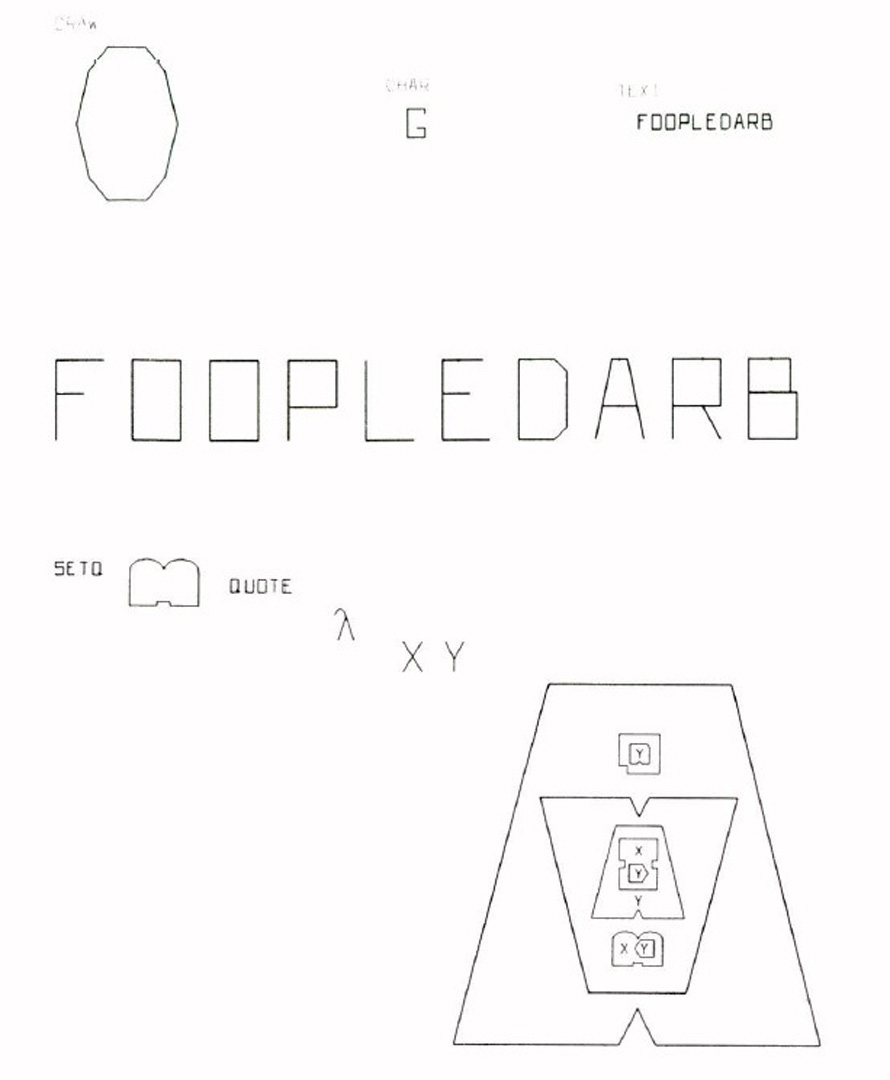“A structure from manipulation for text-graphic objects” by Lakin
Conference:
Type(s):
Title:
- A structure from manipulation for text-graphic objects
Presenter(s)/Author(s):
Abstract:
The general purpose graphics systems of the future will need a simple logic for visual objects—one structure underlying both text and graphics. As an experiment, perhaps the immediate handling of visual objects by the user can provide the starting point for developing that structure. This paper describes the PAM graphics system, in which the structure of text-graphic objects arises directly out of manual manipulation. The needs of manual manipulation determine the text-graphic pattern as the simplest organizing structure for images; PAM stands for PAttern Manipulating. The PAM system is designed for the agile manipulation of text-graphic patterns—first manually, and then, later, programmatically. Starting from this strict ‘front-in’ viewpoint—where immediate manipulation (hand powered animation) was to be the primary application—a ‘manipulative grammar’ was evolved to give the user a simple yet powerful handle on text-graphic images. This grammar turned out to be a generalization of LISP syntax from textual symbolic expressions to text-graphic forms, structuring such forms as trees and then offering: @@@@spatial GRABBING of objects into attention @@@@tree guided attention shifters like FIRST, REST, NEXT, and UP spatial & tree manipulations on any object in attention. @@@@The resulting structures also offer surprising computational power (in a manner directly analogous to the way the basic list structures and functions of LISP give rise to the flexibility and power of a full blown LISP system, McCarthy and Talcott [1]), leading finally to computing with text-graphic forms. Consequently, a semantic function is added to supplement the basic manipulative grammar: @@@@evaluation of object in attention, result displayed at the cursor. Evaluation supports facilities like naming (and thus saving) visual objects, programming, and creation of menus (patterns of evaluatable function objects). An experimental version of the PAM system has been implemented in MACLISP at the Stanford Artificial Intelligence Lab.
References:
1. McCarthy, John and Talcott, Carolyn, LISP Programming and Proving, Class notes CS 206, Computer Science Dept., Stanford University, 1979.
2. Sutherland, Ivan E., “Computer Graphics: Ten Unsolved Problems”, Datamation, pages 22-27, May 1966.
3. Futrelle, R.P. and Barta, G., “Towards the Design of an Intrinsically Graphical Language”, SIGGRAPH ’78 Proceedings, pages 28-32, Aug 1978.
4. Engelbart, D.C., “Augmenting Human Intellect: A Conceptual Framework,” SRI International, Menlo Park, California, Oct 1962.
5. English, W.K., Engelbart, D.C., and Berman, M.L., “Display-Selection Techniques for Text Manipulation”, IEEE Trans. on Human Factors in Electronics, Vol. HFE-8, No. 1, March 1967.
6. Sacerdoti, Earl, “Planning in a Hierarchy of Abstraction Spaces”, Adv. Papers 3rd Intl Conf. on Artificial Intelligence, Stanford University, August 1973.
7. Teitelman, Warren, InterLISP Reference Manual, Xerox Palo Alto Research Center, 1978.
8. Sutherland Ivan E., “Sketchpad: A Man-Machine Graphical Communication System”, Proceedings—Spring Joint Computer Conference, pages 329-346, 1963.
9. Martin, Paul A., DIP: A Program to Understand Diplomacy Dialogs, PhD thesis, Stanford University, forthcoming.
10. Defanti, Tom, “The Digital Component of the Circle Graphics Habitat”, Proceedings National Computer Conference, 1976.
11. Sibbet, David, “Introduction to Group Graphics”, The Correspondent, CORO Foundation North. Cal. Public Affairs Quarterly, Summer 1976.
12. Lakin, Fred, Design for a Working Group Display, manuscript 1974.
13. Ball, Geoffrey H. and Gilkey, James Y., “Facilitation and Explicit Group Memory—Their Application in Education”, SRI International IR&D No. 183531-409, Menlo Park, California, Dec 1971.
14. Pferd, William, Peralta, L.A. and Predergast, F.X., “Interactive Graphics Teleconferencing”, IEEE Computer, Nov. 1979.
15. Winograd, Terry, Understanding Natural Language, Academic Press, 1972.
16. Natanson, Maurice, Editor, Essays in Phenomenology, Martinus Nijhoff, The Hague, 1966.
17. Lakin, Fred, “Computing with Text-Graphic Forms”, submitted to the LISP Conference at Stanford University, August 1980.
18. Lakin, Fred, “Indigenous Graphics for LISP”, submitted to the LISP Conference at Stanford University, August 1980.





